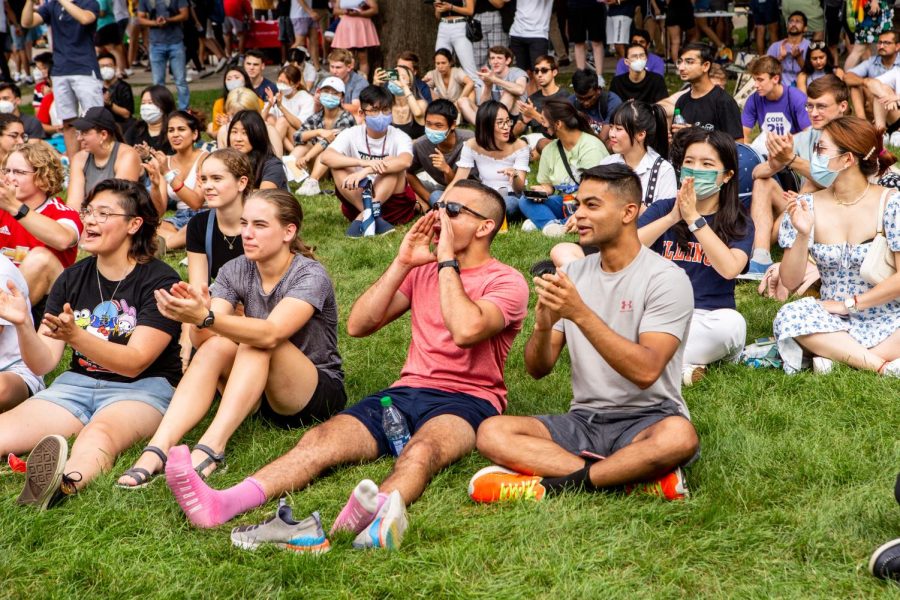Editorial | UI’s flaws disproportionately fail students
Students cluster together and cheer on the main quad during Quad Day on Aug 22. For the upcoming sesmester, the University needs to clarify and fix the inconsistences when it comes to Covid-19 on campus.
May 4, 2022
On Quad Day, seas of students covered every spot of grass, eager to catch up with their friends and greet the new class of 2025. It was a hot and humid day, and hardly a mask was in sight.
Though this may seem like progress considering there wasn’t a Quad Day the year before, it’s not. We may not want to hear otherwise, but the pandemic is still not over.
The University’s gradual removal of mandates throughout the school year has demonstrated that they are not devoted to stopping the spread and keeping their students safe. This needs to change next year.
COVID-19 burnout on campus has infected the mindset of students this year. But those that have the privilege to attend a maskless University-hosted Yung Gravy Spring Jam concert and ignore an unenforced testing policy are putting their high-risk peers’ lives at risk.
Even though the University boasts a praiseworthy testing system, the COVID-19 Testing and Vaccination Data Dashboard shows a recent spike in new cases and a near-record low in daily testing in mid-April.
Get The Daily Illini in your inbox!
This concerning trend doesn’t affect all of us, which makes it easy to ignore — the bubble of supposed safety that once shielded much of Champaign-Urbana from the pandemic now only protects low-risk populations — and ignores high-risk demographics that are disproportionately affected by this lack of concern.
University Housing requires students to test every other day if they live in halls with a higher prevalence of COVID-19 than the state average, and cites that building access status will change if a resident fails to test. However, building access status does not accurately reflect this policy and often displays the “granted” status regardless of adherence to these testing guidelines.
The Champaign-Urbana Mass Transit District recently lifted its mask mandate. Public transportation is a hub for contagious diseases, and now it is less accessible to high-risk residents that rely on MTD to traverse across C-U.
The commonality behind these instances is that high-risk populations are disproportionately affected by these policies. The lack of empathy for these individuals is painfully apparent from the University and the general student body — they are forcefully isolated as other students relish in the classic “college experience” and are blissfully unaware of the consequences that follow.
And those consequences do follow. Though high-risk students are more likely to get sick, no one is fully immune to the effects of the pandemic. Isolation is still a possibility for anyone, which has detrimental impacts on an individual’s mental and physical health — which makes it especially vital for everyone to stay cautious so we can get out of the pandemic for good.
The University and its students have the potential to do better as we move into the next academic year. College is such a vital part of our lives — in order to make the most of it, let us pop the bubble that surrounds us and be mindful of the people around us.






